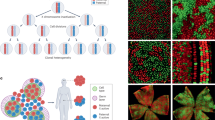Abstract
Purpose: To correlate the X inactivation pattern, as determined by one or more molecular assays, with phenotype in individuals with structurally abnormal X chromosomes.
Methods: We utilized methylation analysis of androgen receptor (AR) and Fragile X (FMR1) genes and expression studies of an XIST polymorphism to assess X inactivation patterns of 28 females with structurally abnormal X chromosomes. Individuals were placed in one of three categories: (1) completely nonrandom inactivation of one X chromosome, (2) preferential or skewed inactivation of one X chromosome, or (3) random inactivation of either X chromosome.
Results: In 19 of 21 cases with complete (> 7%) skewing of X inactivation, the phenotype was either normal, consistent with a single gene disorder, or consistent with classical Turner syndrome; two cases with completely nonrandom X inactivation had unexplained mental retardation phenotypes. In contrast, six of seven cases that did not exhibit completely nonrandom X inactivation were phenotypically abnormal. Carriers of two balanced translocations, two duplicated Xs, one deleted X, and one 45,X/46,X,r(X) presented with mental retardation and/or multiple congenital anomalies.
Conclusion: In patients with random or skewed X inactivation, the abnormal phenotype was hypothesized to be due to functional nullisomy or disomy of X-linked genes. Based on these results, we propose that X inactivation studies should be performed on all women with structurally abnormal X chromosomes. This should aid in the understanding of abnormal phenotypes in liveborn individuals with abnormal X chromosomes and may help to predict phenotypes for prenatally detected cases in the future.
Similar content being viewed by others
Article PDF
Author information
Authors and Affiliations
Rights and permissions
About this article
Cite this article
Wolff, D., Schwartz, S. & Carrel, L. Molecular determination of X inactivation pattern correlates with phenotype in women with a structurally abnormal X chromosome. Genet Med 2, 136–141 (2000). https://doi.org/10.1097/00125817-200003000-00004
Received:
Accepted:
Issue Date:
DOI: https://doi.org/10.1097/00125817-200003000-00004
Keywords
This article is cited by
-
Familial chromosomal translocation X; 22 associated with infertility and recurrent X mosaicism
Molecular Cytogenetics (2016)
-
Investigating the role of X chromosome breakpoints in premature ovarian failure
Molecular Cytogenetics (2012)
-
Clinical correlation between premature ovarian failure and a chromosomal anomaly in a 22-year-old Caucasian woman: a case report
Journal of Medical Case Reports (2012)
-
High-resolution SNP arrays in mental retardation diagnostics: how much do we gain?
European Journal of Human Genetics (2010)



